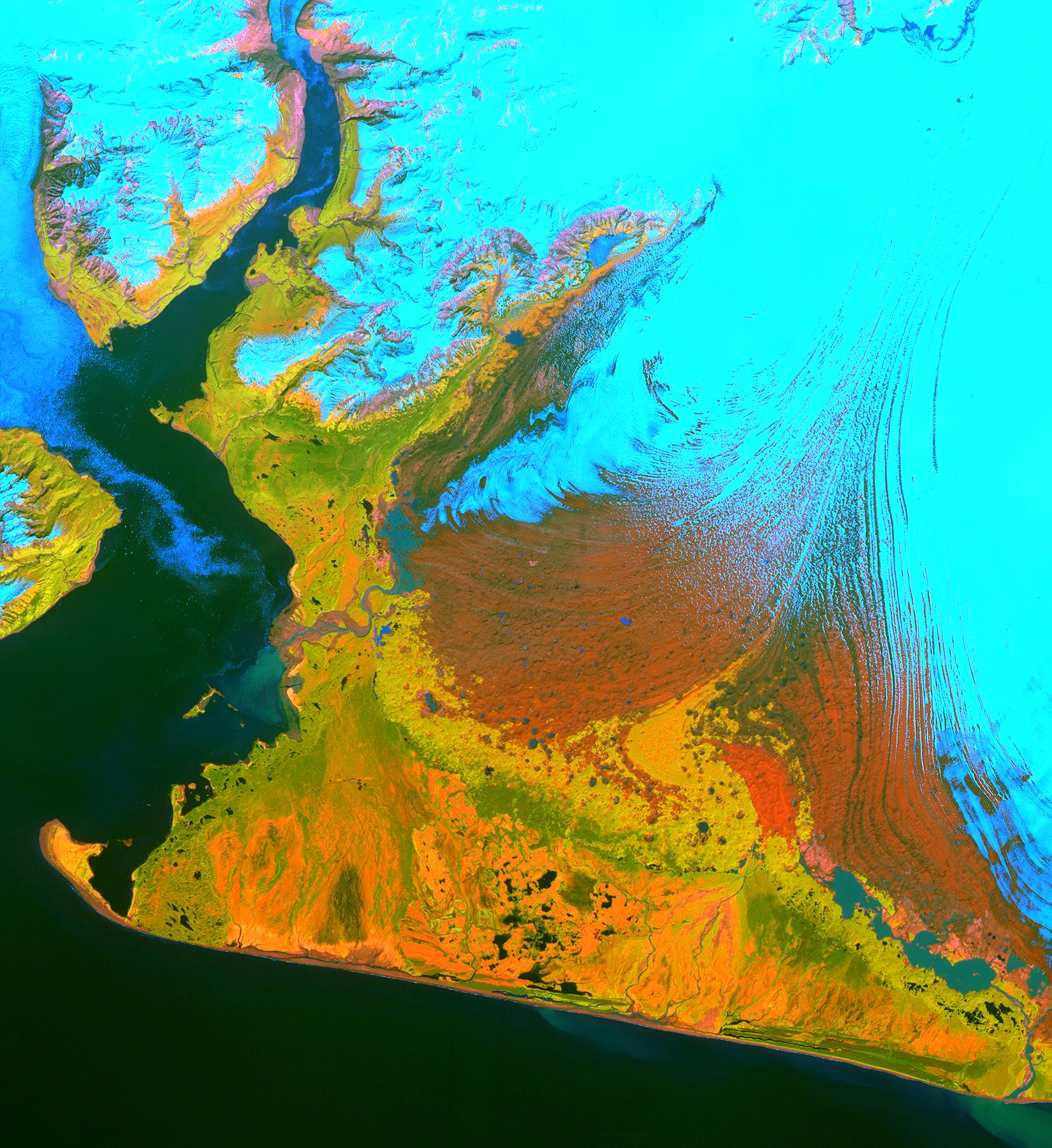Ask NASA Climate | August 16, 2009, 17:00 PDT
Pick of the pics
Malaspina Glacier, Alaska

Courtesy of NASA/Goddard Space Flight Center, Japan's Ministry of Economy, Trade and Industry, Japan's Earth Remote Sensing Data Analysis Center, the Japan Resources Observation System, and the U.S./Japan ASTER Science Team.
This picture of Malaspina Glacier, Alaska, was taken in June 2001 by NASA’s Advanced Spaceborne Thermal Emission and Reflection Radiometer (ASTER) instrument. A recent report from the U.S. Geological Survey, which has tracked the state of glaciers in the Pacific Northwest and Alaska over the past 50 years, shows that they have shrunk dramatically over the last couple of decades. The South Cascade Glacier in Washington, for example, has lost nearly half its volume and a quarter of its mass since 1958. These long periods of record give us clues to the climate shifts (higher worldwide temperatures) that are likely driving glacier change.
